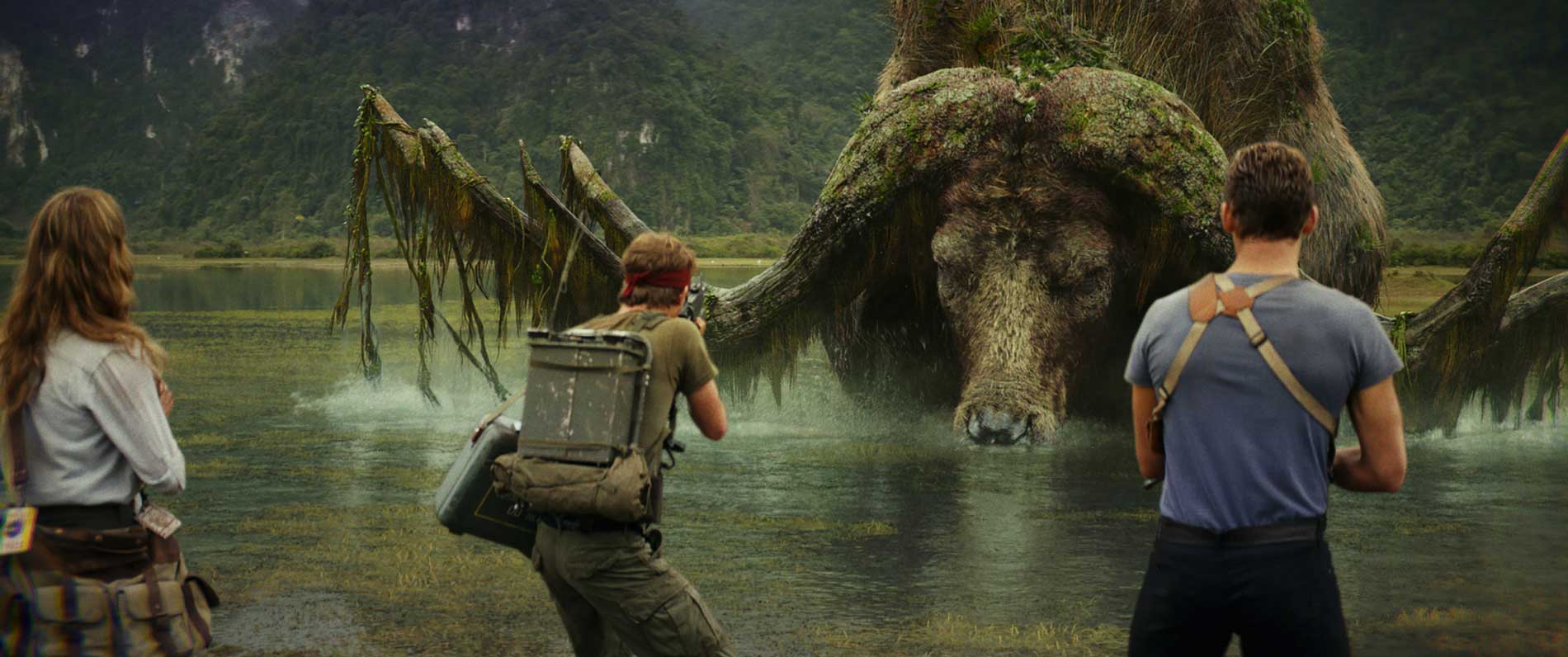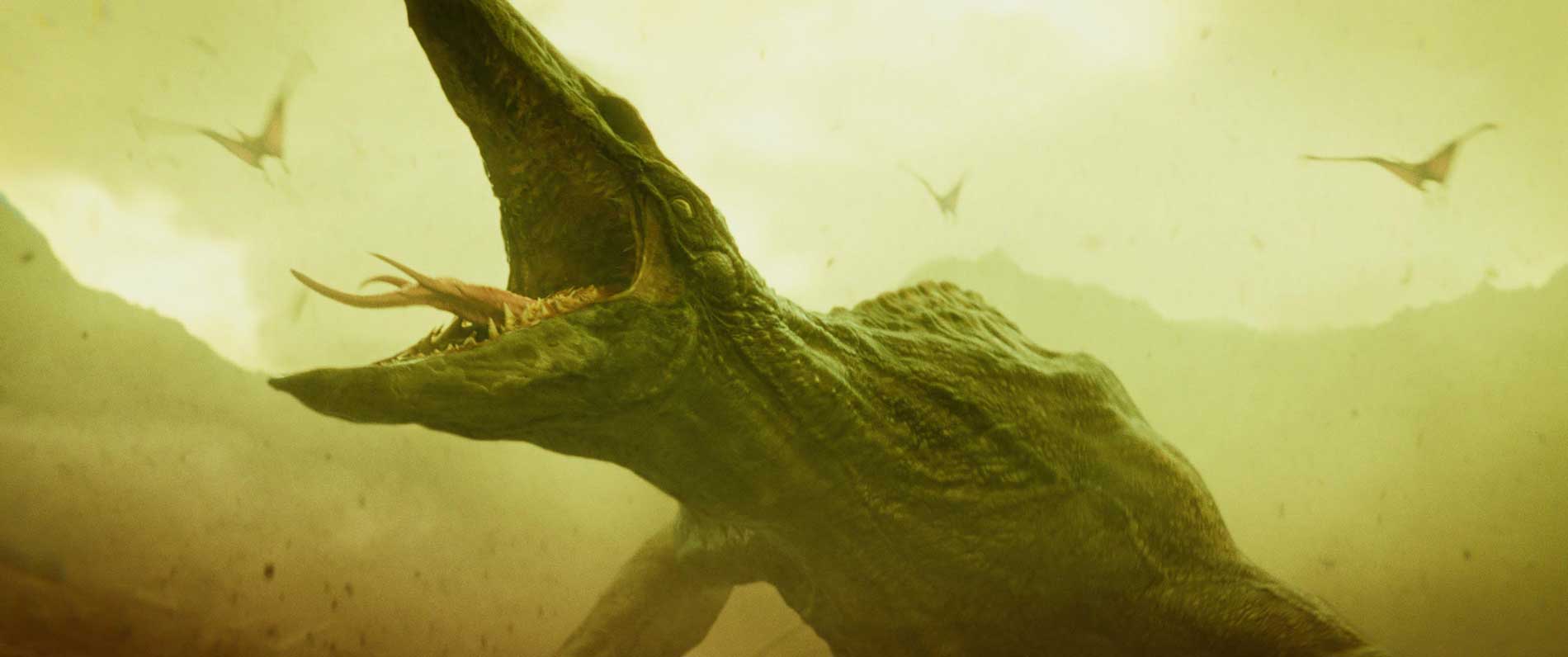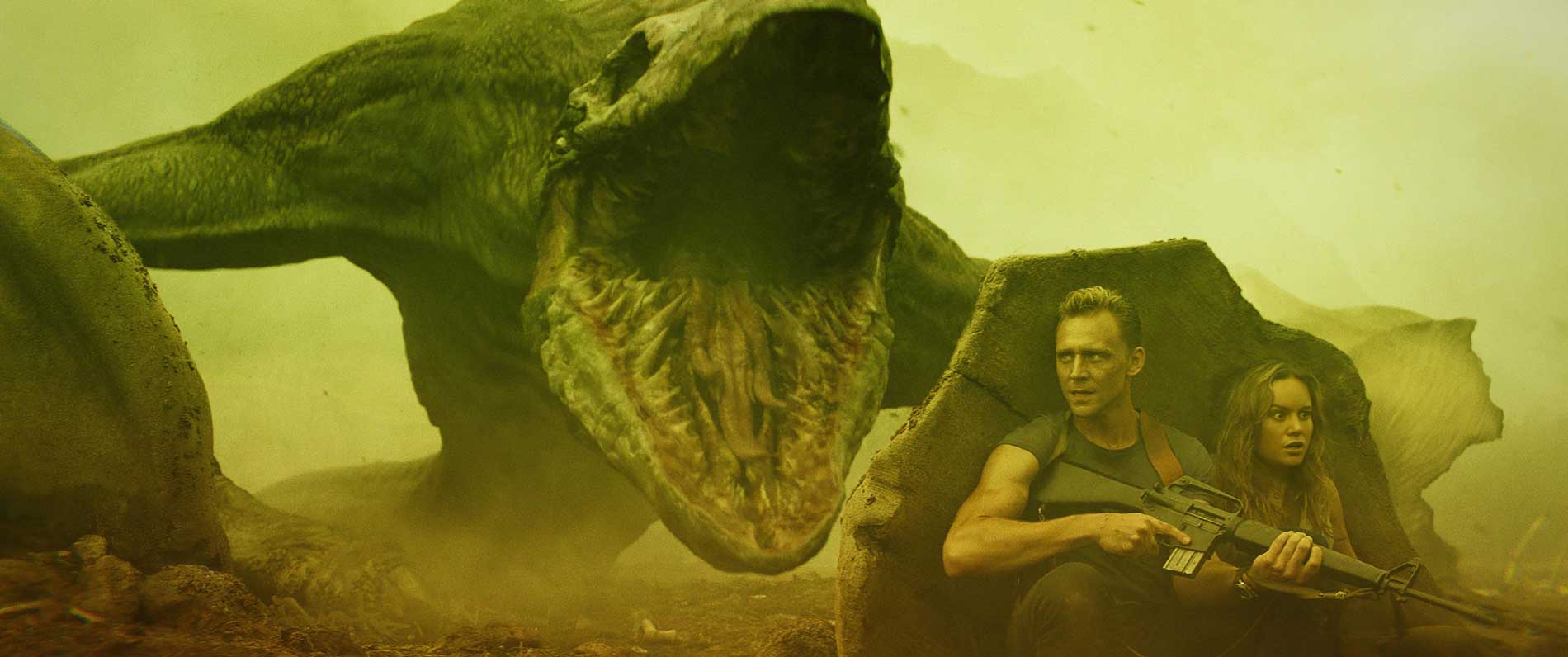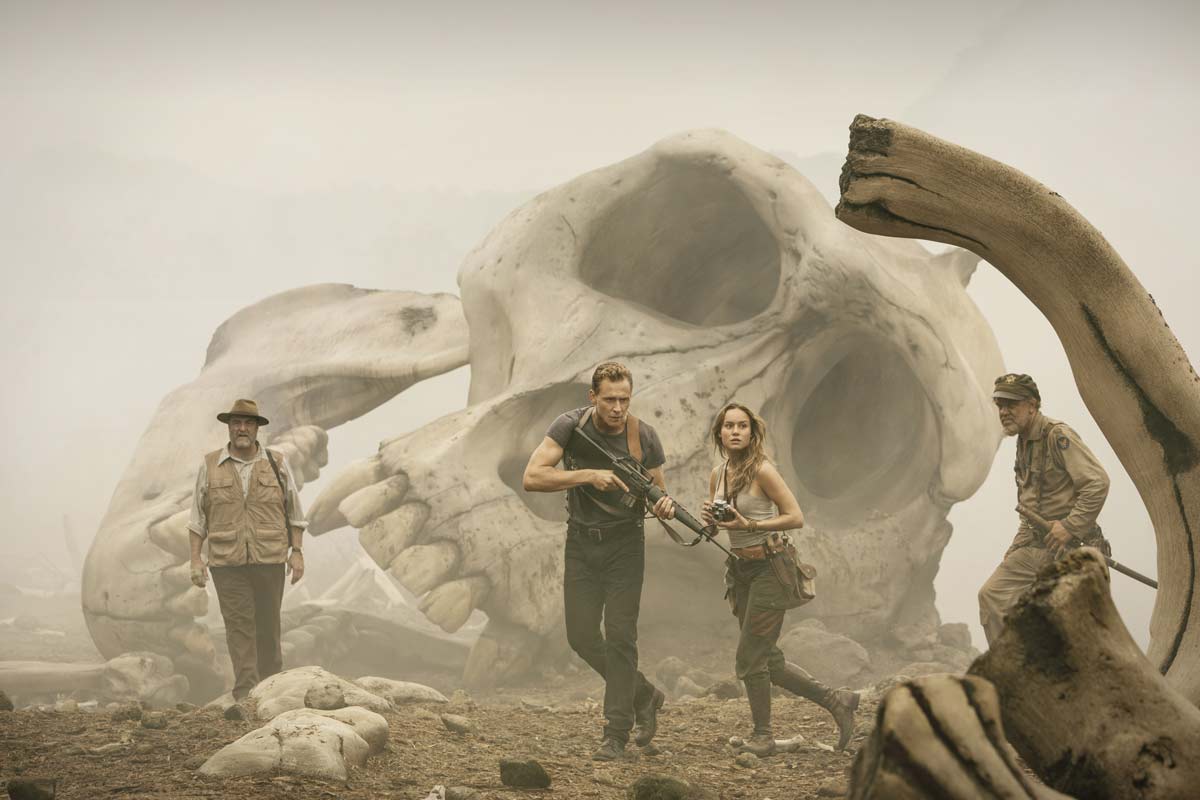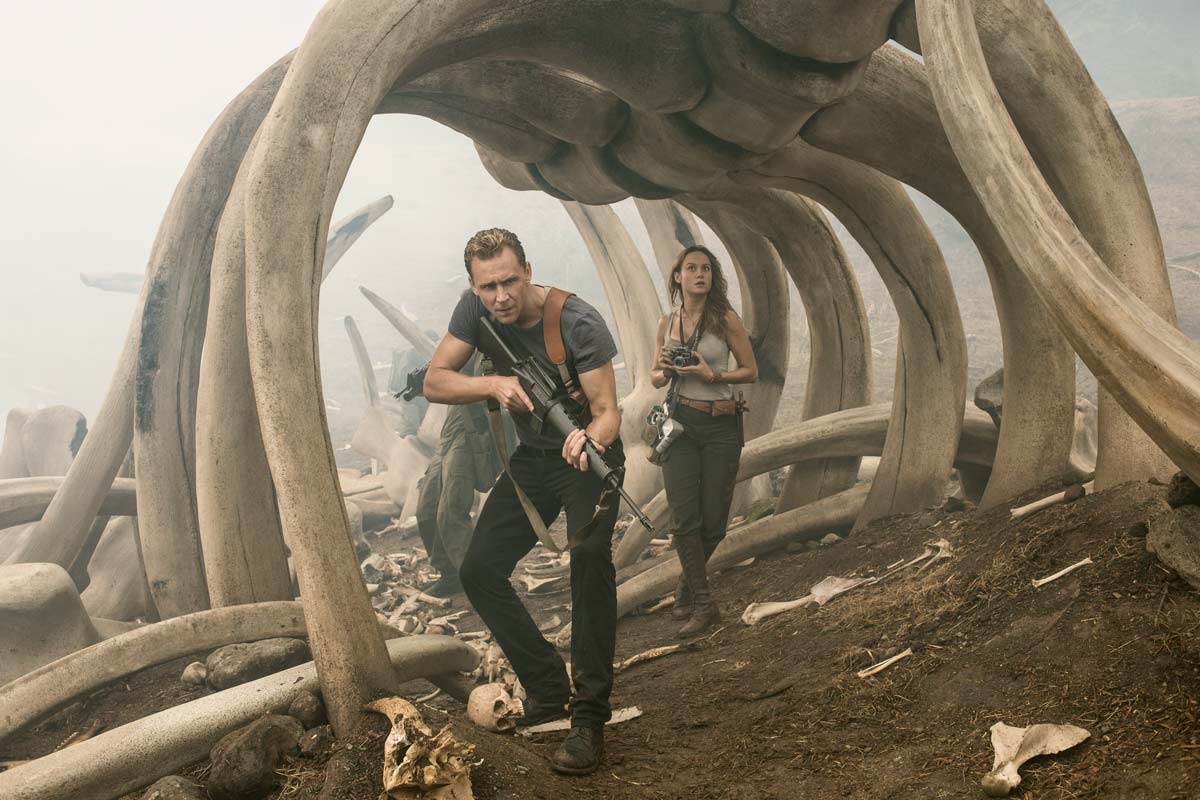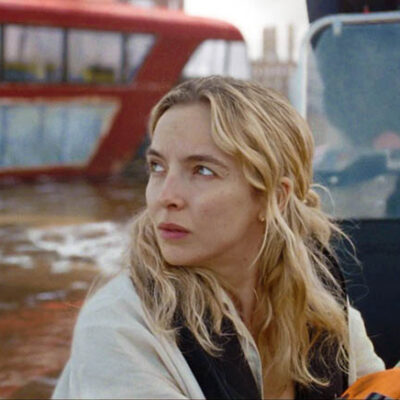By IAN FAILES
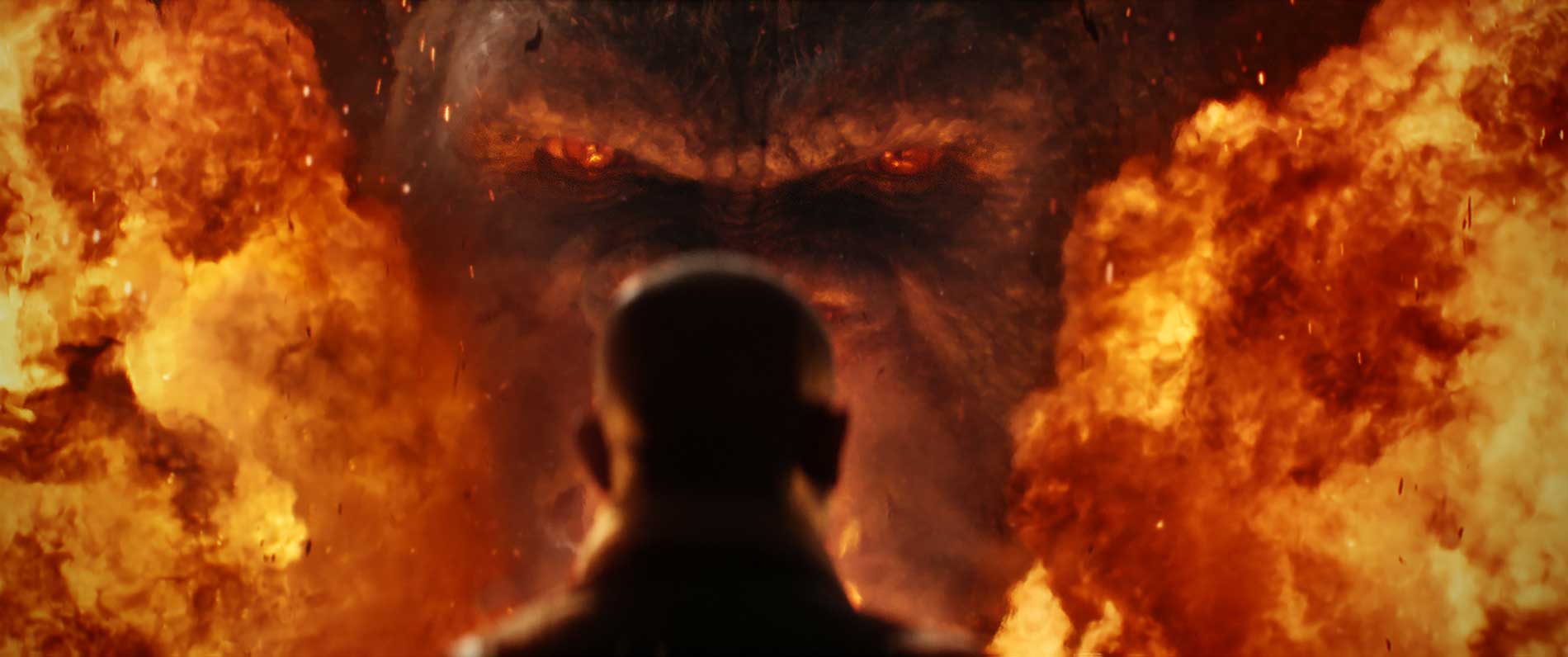
All photos courtesy of Warner Bros./Legendary Entertainment. All Rights Reserved.
ILM Visual Effects Supervisor Jeff White tells VFX Voice about how the studio crafted a 100-foot-tall ape in the new Kong: Skull Island.
VFX Voice: When you came on board, just where did you start with a project as big as this?
Jeff White: It just really was all about Kong. Everyone knew that he was going to be the biggest challenge on the film, the character everybody cares the most about. There was a lot of amazing design exploration that director Jordan Vogt-Roberts, production designer Stefan Dechant and senior visual effects supervisor Stephen Rosenbaum had gone through.
We were able to start modeling Kong early. That was really important. We were able to take all the reference that Jordan had pulled together and filter it between our VFX Art Director Aaron McBride and Kris Costa, our lead Kong modeler, to really find who this character was in the film. That process took us a very long time, not only just to arrive on a look, but then put the asset together and cover it with hair.
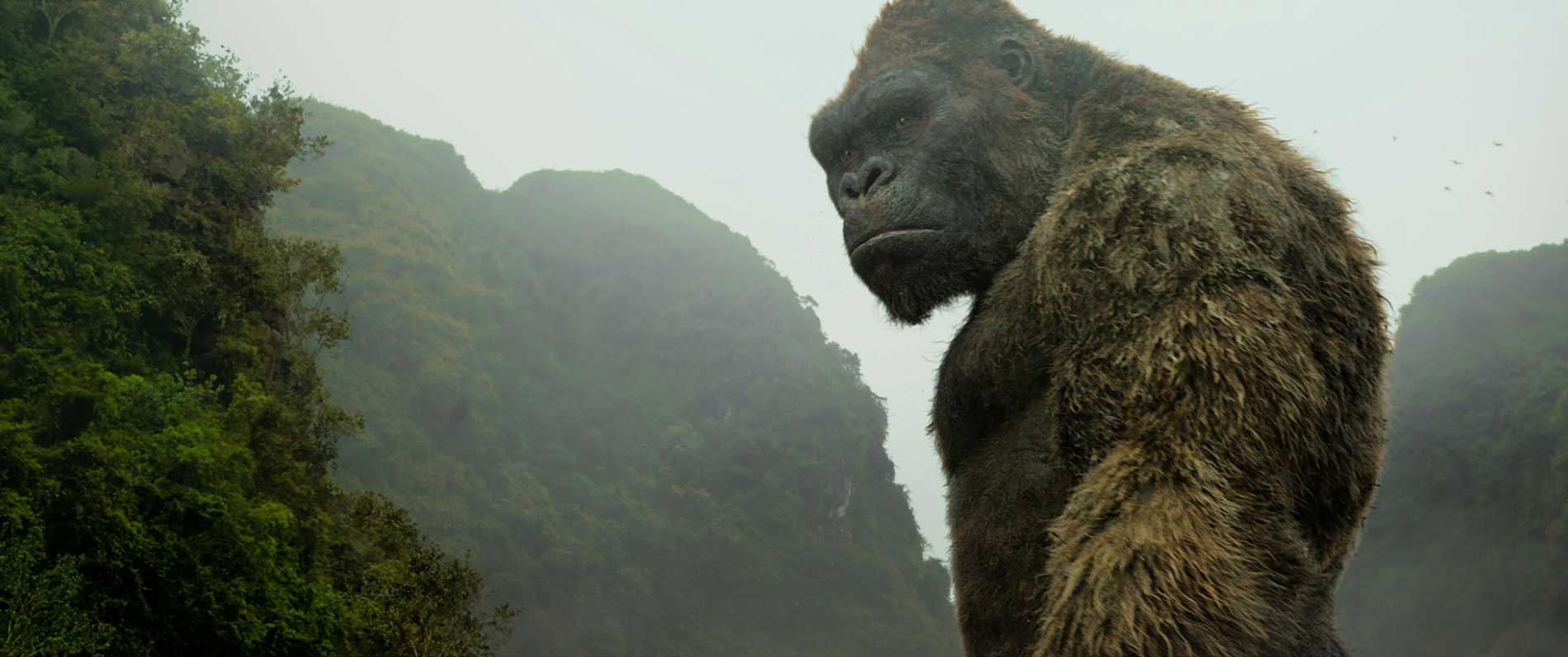
Q: Was there anything you felt needed to be done with ILM’s pipeline and workflow to help bring Kong and the creatures to life?
A: Yes, absolutely. We knew that over the course of the film, the camera could be anywhere on Kong. With a creature that’s about 100-feet tall, we knew we would see close-ups of the feet, the hands, and the face. Just about every part of him had to be completely detailed out. We would even look at the bottoms of his feet knowing we’re probably going to see him step on a fair number of humans.
That meant a tremendous amount of resolution and incredibly detailed texture maps that were painted by Alison Farmer, lead texture artist. We spent a long time just getting the base level asset working. In particular, we had two hair groomers work for almost a year on Kong. It was such a big task, we had to split it up: One did the shoulders, head and legs, and the other did the torso and arms.
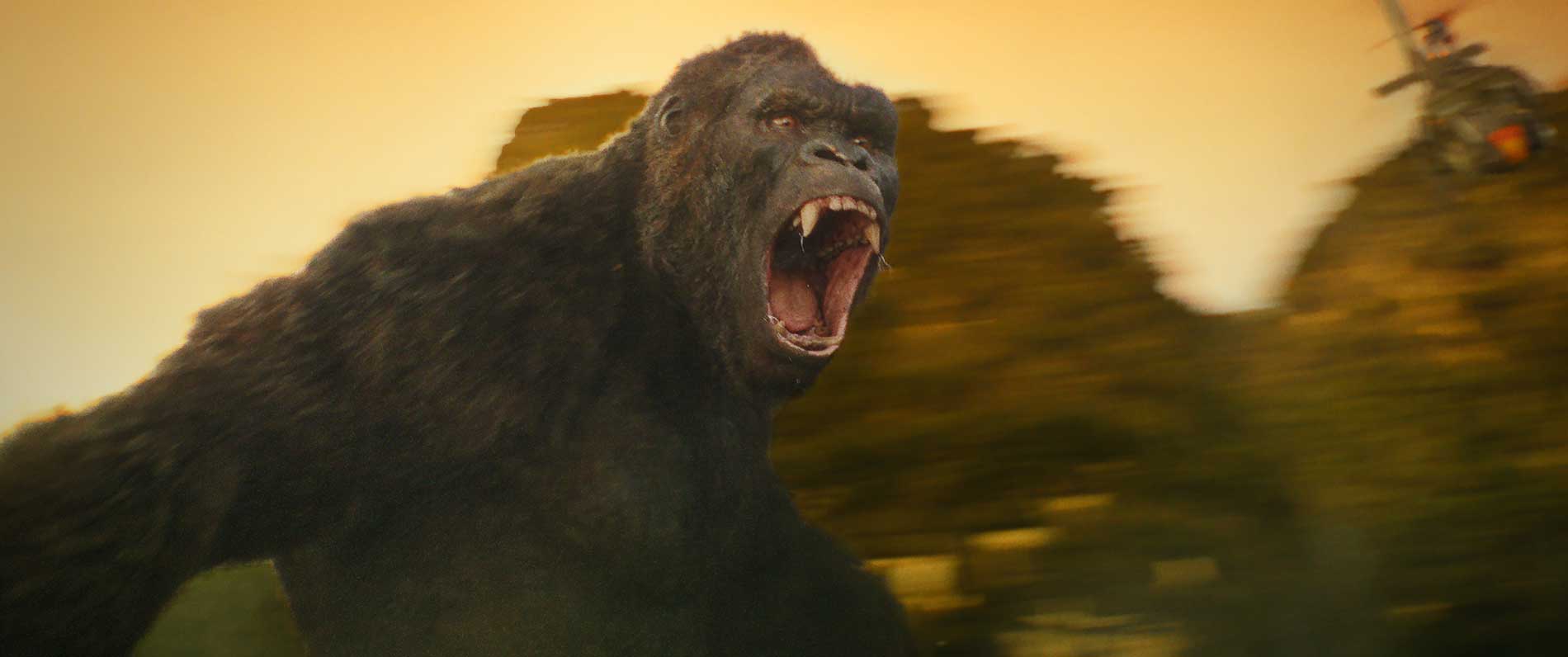
Even though all the haircraft tools we developed for Warcraft were incredibly useful and got pushed forward on The Revenant, it still is a really big undertaking to style the hair for a creature this large. When it’s 100-feet tall, anything that feels like a repetitive patch just gives it away as a CG render right away. So a lot of the different styles and grooms had to be hand-styled to sell all the changes in direction of the fur.
We were helped by looking not at a lot of gorillas, who tend to actually have very straight hair and keep themselves very clean, but at bison and camels. We were looking for matted, dirty, tussled hair as inspiration for Kong. We were thinking about him living in that environment and probably not bathing that often. We had to develop an entire system to scatter debris into his hair so that it moves along with the dynamics of the hair. That let us put leaves and twigs and – we called them sesame seeds – little bits of extra crust onto his face. And then lots of caked mud and dirt.
“Just about every part of him had to be completely detailed out. We would even look at the bottoms of his feet knowing we’re probably going to see him step on a fair number of humans.”
– Jeff White
Kong also spends a fair amount of time in the water. We developed a system where Kong could take a dry arm and plunge it into the water, and we would measure the saturation of the hair and use that to drive the hair simulation so it would sort of swim and be loose and flow around, and then as he pulled his arm back out it could start to dry again.
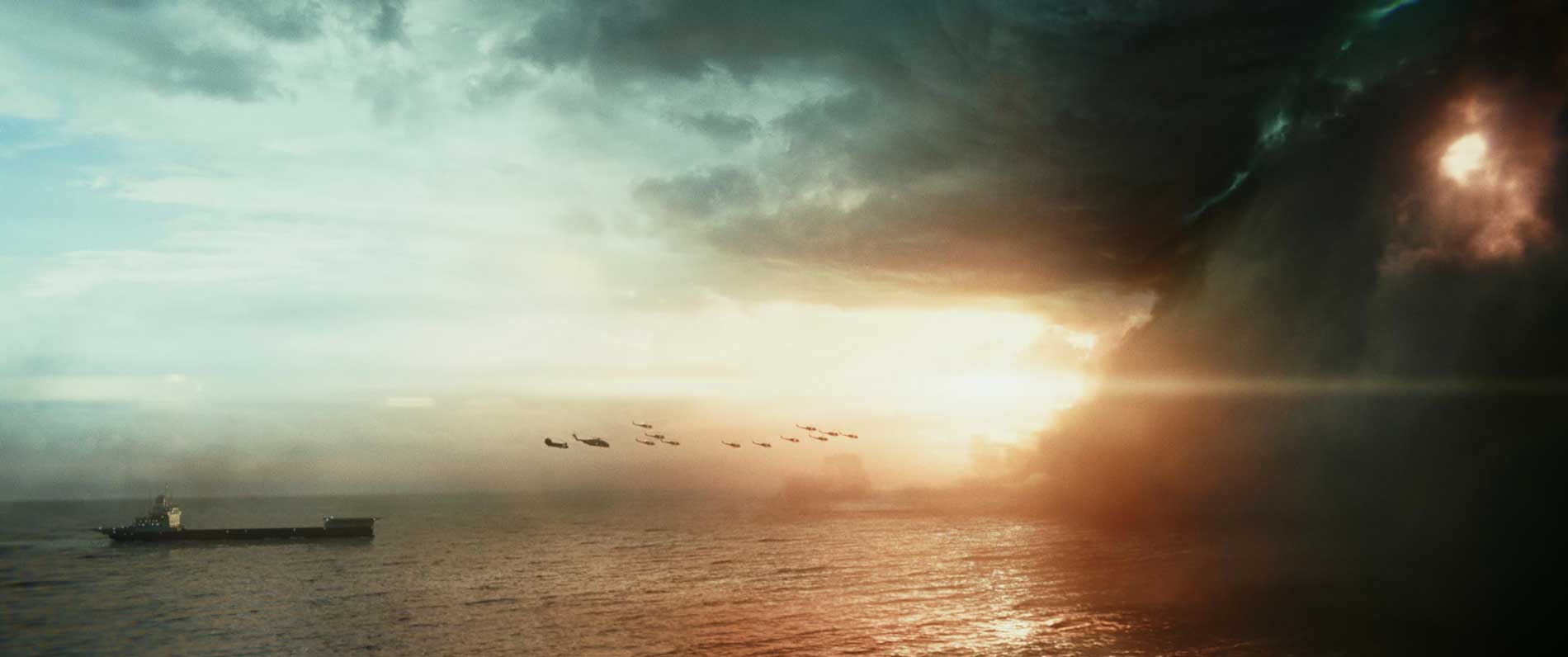
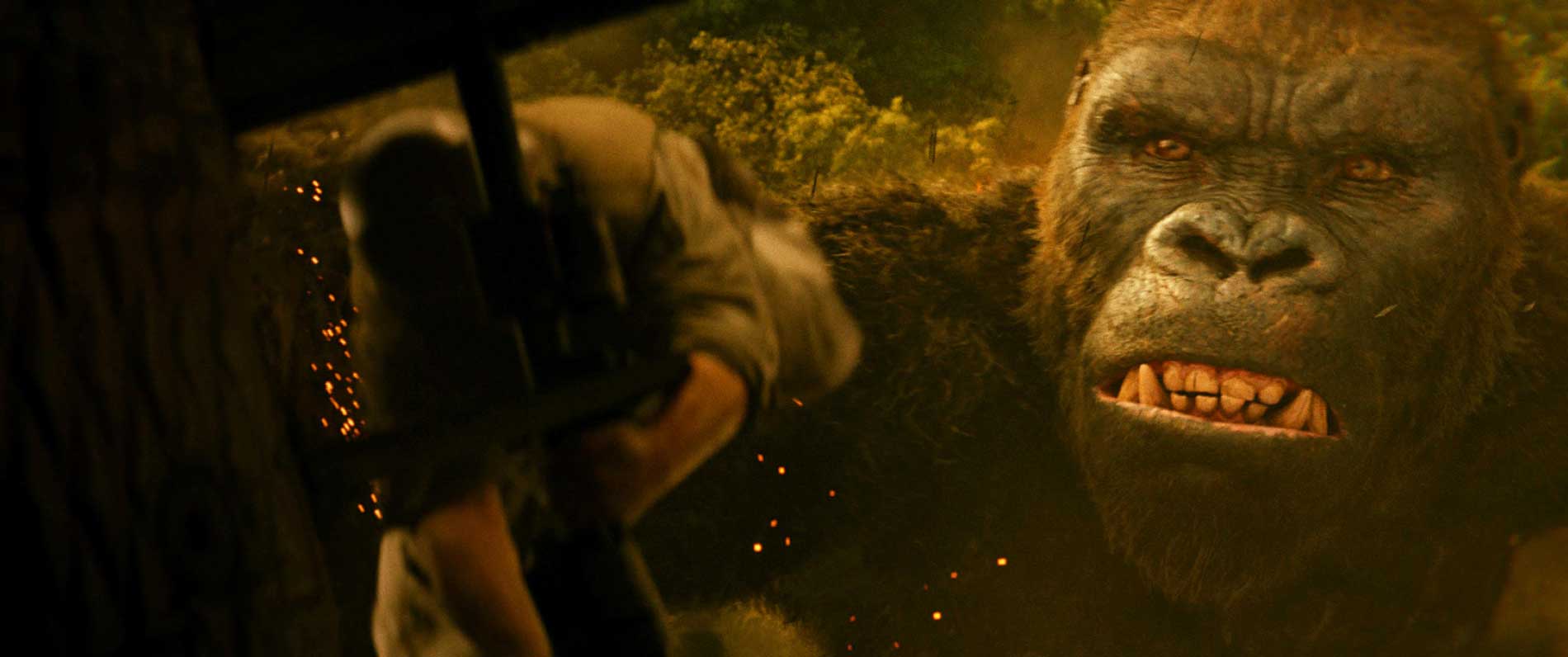
Q: Can you talk about getting emotion out of Kong, especially in terms of his facial animation?
A: One of the advantages of Kong is that you’re getting to express emotion through a 12-foot-tall face. There is just an incredible amount of detail in there. We did have some capture sessions with actor Toby Kebbell that we ended up using for inspiration, but a lot of it was keyframed. Scott Benza, animation supervisor, spent a large amount of time working on just the eye movements. He was able to bring a lot of empathy for the character and show that, yes, he’s this giant movie monster when he’s fighting helicopters, but he also has these very emotional moments where you feel real sympathy for him.
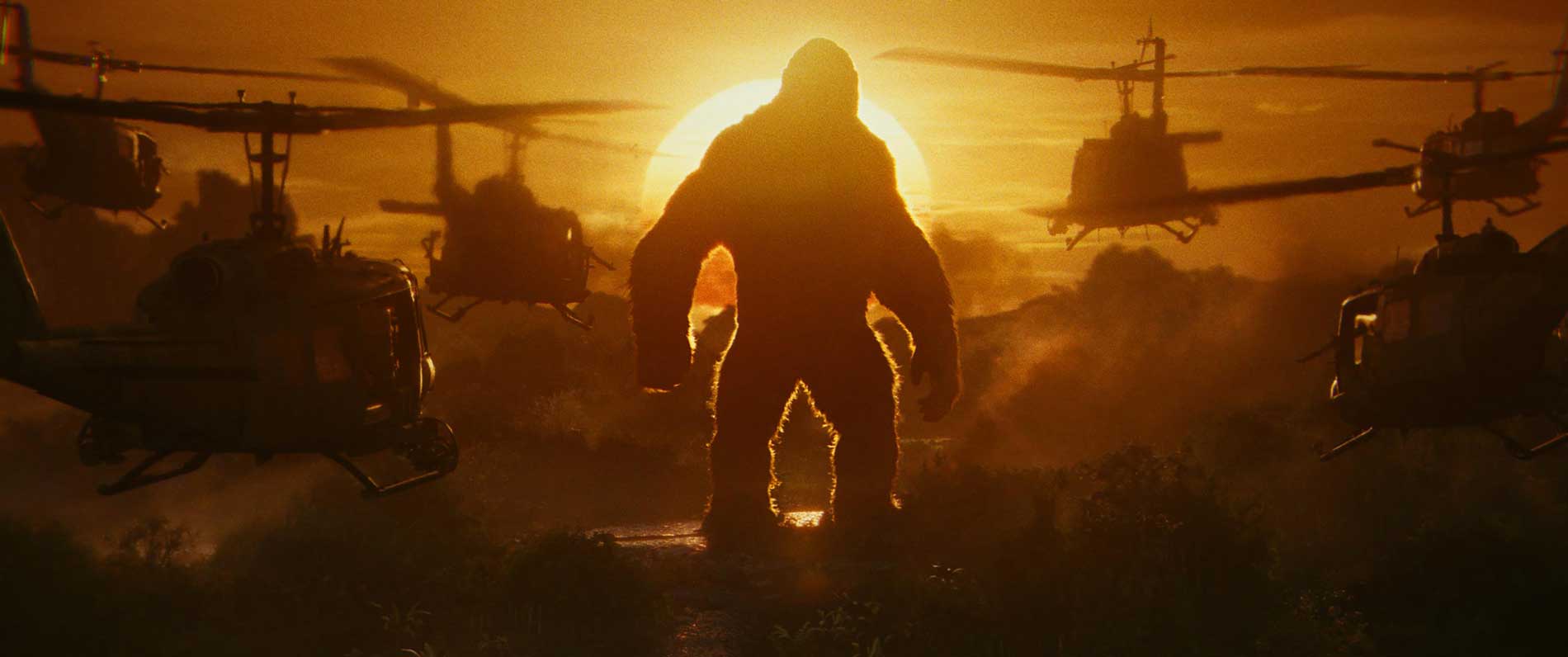
Q: What kind of planning went into shooting the scenes on location where creatures would be added later?
A: It was a huge challenge – not only was Kong huge, but the big ‘Skullcrawler’ that you see him fight is 40-feet tall and 200-feet long. It really takes a lot of thinking ahead in terms of, okay, how are we going to shoot this, and tell people where to look, and hope it still feels organic. We did have some great previs that was done by The Third Floor, and also Halon, so that provided a nice blueprint.
“Scott Benza spent a large amount of time working on just the eye movements. He was able to bring a lot of empathy for the character, and show that, yes, he’s this giant movie monster when he’s fighting helicopters, but he also has these very emotional moments where you feel real sympathy for him.”
—Jeff White


